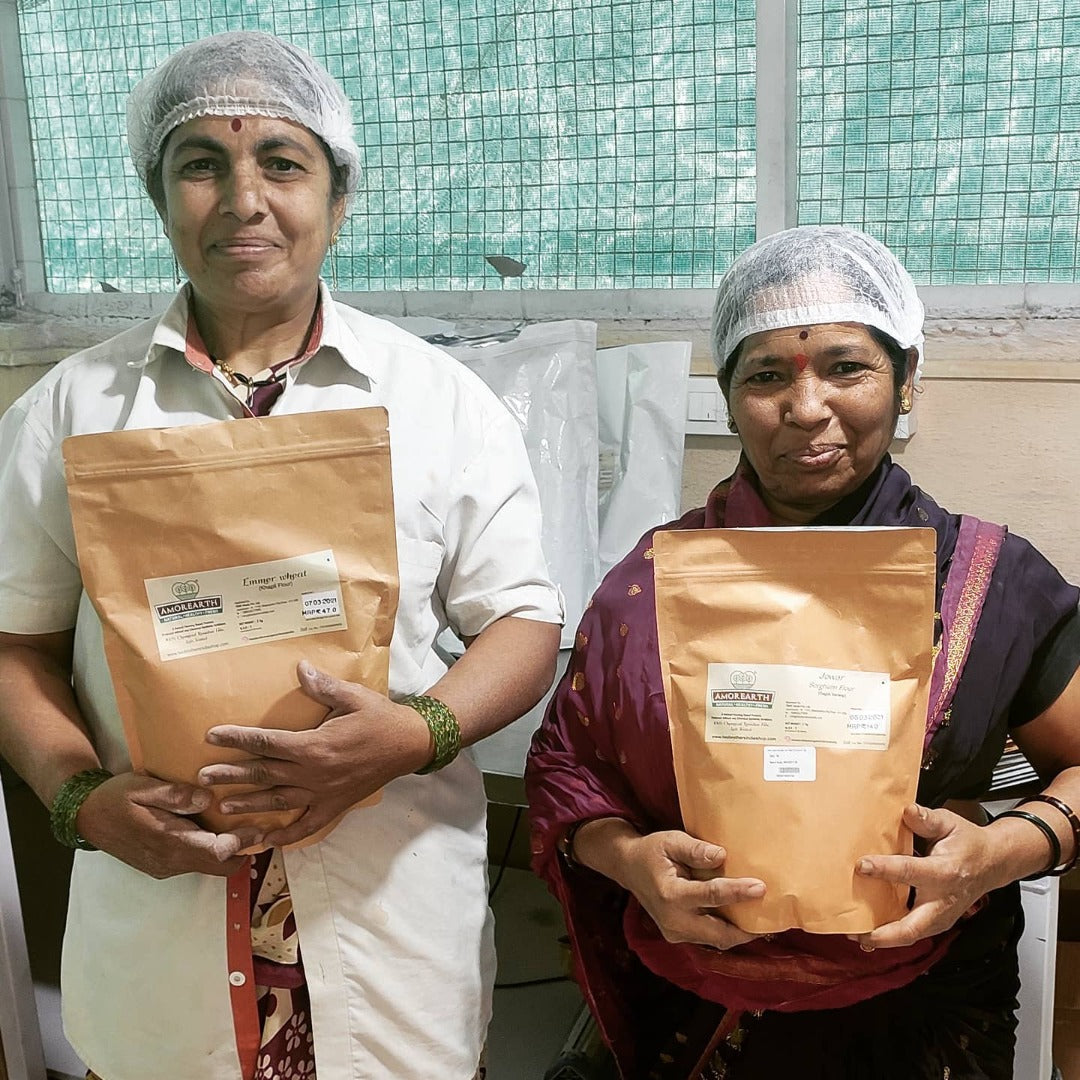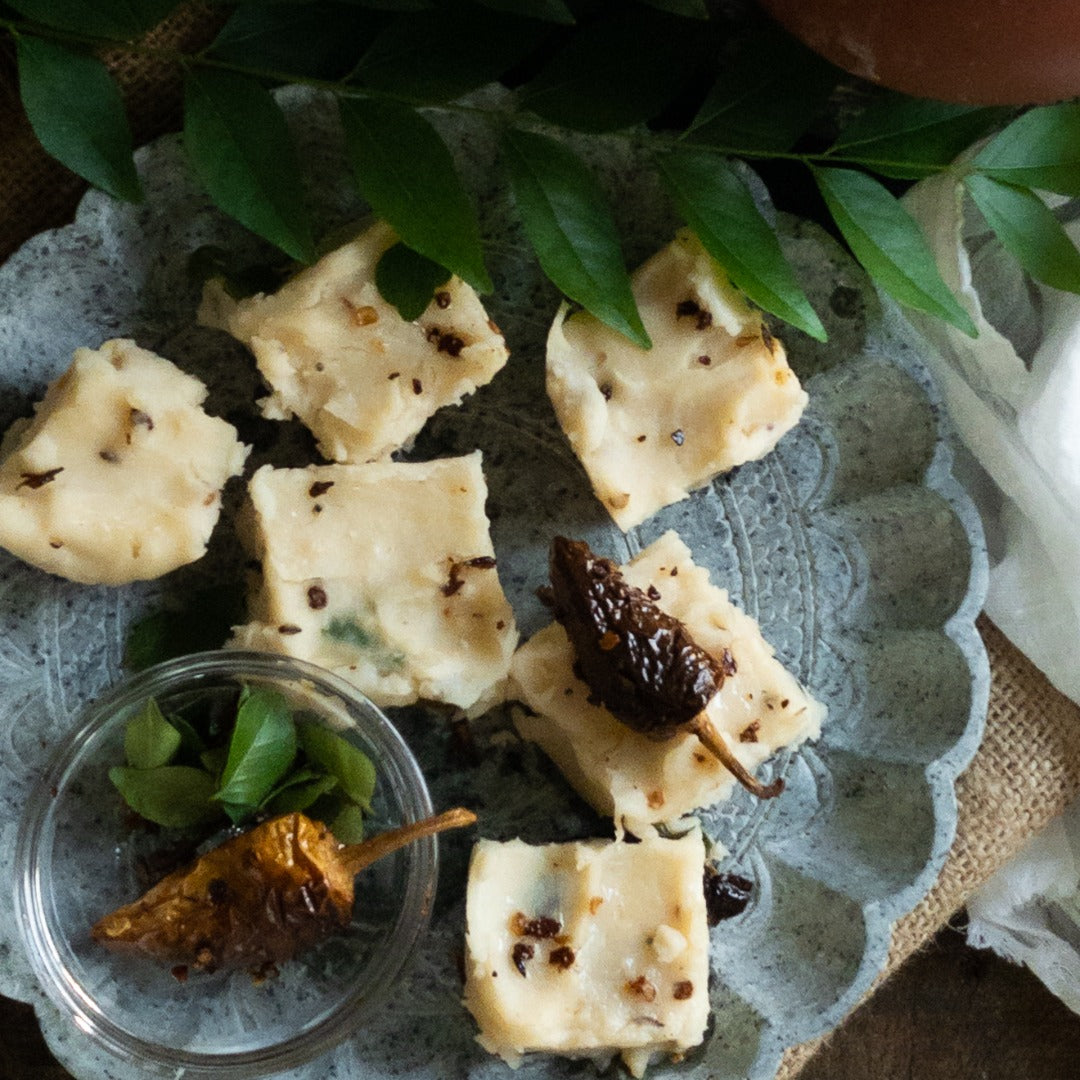- written by Shanthini Rajkumar
Understanding and re-visiting the Indian culinary heritage is perhaps the most obvious shift that we Indians, living in the cities, are making. It is a learning process which is making us delve deeper into the benefits of following a traditional Indian diet.
In looking at ingredients and understanding the need for a seasonal diet, it is also becoming more apparent that Indian dishes are in fact a complex blend of ingredients which complement each other not just on the palate but also in the nutrition pairing. It forms the core of ancient food science, one that we are slowly beginning to re-learn now.
It starts from the very basic ingredients necessary to cook a meal; the oils or plant based seeds which are crushed into oils to be used as a cooking medium.
These seeds and nuts which are indigenous to different parts of India were found to contain oils when dried and crushed. There’s only so much fresh produce which one can consume. Making oils was the next step of extracting the nutritive properties of an ingredient without it going to waste.
Ingredients like coconut, sesame, groundnuts, castor seeds and mustard seeds were pressed in a wooden press to crush and extract these Woodpressed Oils. A wooden press consisting of a large drum and a shaft was rotated or steered by livestock because the quantities were large and a considerable amount of time and energy was required to make these oils.
The churning was also done at a low speed which ensured that the nutrients stayed intact during the crushing. The temperatures caused by the churning were absorbed by the wooden press which was made from Indian almond trees. The wood ensured that the heat did not get transferred to the seeds and that was how the term ‘cold pressed oils’ came to be used.

The disadvantage of making oils in this manner was that the output was less and time taken was long. Despite the advantage of extracting a high quality product, it failed to be lucrative.
The wood pressed expellers were then modified to also include steel. While the inner drum and inner shaft were still wood, the exteriors and fittings were also steel. This led to greater quantities of oil being produced but the rotation of the metal generated more heat and this did transfer to the seeds. The rotation must be kept to below 15 rpm to qualify as a cold pressed oil.
So though it was still considered to be a wood press, the oil could not be qualified as a cold pressed oil because of the excess heat generated.
The latest oil pressing machines consist of steel. There’s no wood and these expellers rotate at a very high rpm producing a lot more oil when compared to the wood press for the same quantity of seeds. The heat sensitive nutrients are destroyed and the oil also cannot be stored for a long period of time. The oils which are not cold pressed can turn rancid quickly. The heat generated when making the oils in a steel expeller also destroys all the antioxidants and minerals.
When adding oils to our diet, it is recommended by traditional nutritionists and natural health experts to include a variety of oils. This is because each oil contains a different nutrition profile which reacts in a specific manner depending on the dish which is cooked.
Let’s take a look at some examples of how the different oils are used in a variety of Indian recipes.
Coconut oil
The coconut oil is highly fragrant and is distinguished by its almost colourless appearance.

When kept at a temperature below 20 degrees celsius, the oil tends to get thicker and turn solid. It is delicious when paired with typical Kerala style foodlike ‘ishtew', ‘kalan’, ‘olan’, ‘erissery’ etc. Raw or ripe banana chips taste best when fried in coconut oil as does, a snack of tempered puffed rice. “Pori” as it is called in TamilNadu consists of a tempering of mustard seeds, curry leaves, buttermilk soaked dried chillies, garlic and lentils or peanuts. To this puffed rice is added and sauteed to a golden crunch and it is at its delicious best only when cooked in coconut oil.
Mustard oil
The pungency of mustard oil is the true essence of bengali food. The deep colour and sharpness adds a unique deliciousness to a dish.


A sarson ka saag made with fresh mustard leaves is enjoyed to its fullest only with the addition of mustard oil. The amalgamation of these winter greens, green chillies, ginger and mustard oil is a fantastic explosion of tastes. A tandoori roti on the side makes for a satisfying, hearty meal.
Sesame oil
In Tamil language, the name is ‘nallennai’. The literal translation is ‘good oil’.

Most of the food is cooked in the cold pressed sesame oil as it is believed to be beneficial for the heart, gut and mind. The quintessential pairing is to add a generous spoonful of podi (spice powder) also called gunpowder, to the corner of the plate or banana leaf. The index finger is used to make a hole in the centre of the mound of podi to be filled later with sesame oil just before eating.
Eating podi and idli or dosa is an emotion. It is smeared, dabbed, stuffed and coated to heart’s content and to the way each one likes to enjoy it !
Groundnut oil
A pale golden coloured translucent oil, it has a high smoking point making it a perfect medium for deep frying foods. Hot poori or vada fried in groundnut oil is so tasty and also satiates the taste buds quickly. Comfort foods like poha and sabudana khichdi are extremely delicious when cooked with peanut /groundnut oil.
While using different oils is recommended, the usage of one particular oil will be higher in any household because of the regional diet. This depends vastly on the geographical location and the climate of that region. The hot and humid coastal areas is where coconut oil is more predominantly used whereas the colder parts of the country calls for the warmth of food cooked in mustard oil.
Eating the right kind of food which is region and community centric also helps the body thrive well in the environment that it is in.
For eg; when groundnut oil is more popular in the state of Maharashtra, it has a direct impact on the groundnut farms of the region and helps the farmers stay true to the indigenous agriculture of their land.
So too with coconut farmers down south and mustard fields up north. This also ensures that the diversity of nature in relation to insect life, plant life and soil health is also safeguarded to a large extent.
When there is an imbalance in demand like it happened a decade ago with consumers using more olive oil, it is agriculture that faces the brunt of the problem caused by the upset of a balance in demand. Growing crops which are alien to the land is what tampers with the fragile ecosystem and also contributes to change in weather patterns.
Choosing the right oils has a far greater impact on life than what we realize. It isn’t about walking into the supermarket and picking up a ‘good’ brand which talks about heart health and cholesterol. It is indeed so much more.
The need to understand our Indian cuisine and the ingredients which go into it has never been as vital as it is now. If a recipe asks for avocado oil, canola oil, rapeseed oil etc in the chutney, please think again. If our elders have never heard of the oil before, it truly has no business being a part of our ‘daily diet ‘ !











8 comments
tastani
good blog . the information in this blog about wood pressed oil vs cold pressed oil difference is good and also interesting. thank you.The team at Tastani Foods is solely focused on bringing oils which is real and from nature available to everyone. We have taken up this rather ambitious project of moving every Indian household from the highly processed & packed foods to the real food from nature which our ancestors consumed for thousands of years.
good blog . the information in this blog about wood pressed oil vs cold pressed oil difference is good and also interesting. thank you.The team at Tastani Foods is solely focused on bringing oils which is real and from nature available to everyone. We have taken up this rather ambitious project of moving every Indian household from the highly processed & packed foods to the real food from nature which our ancestors consumed for thousands of years.
Prakash Sethia
Very good information for whole of the world for best & healthy foods habits
Very good information for whole of the world for best & healthy foods habits
Khushnuma
You didn’t mention which is better
You didn’t mention which is better
Dr Parvathy
I am unable to get wood pressed oil.. will cold pressed oil have the same benefits?
I am unable to get wood pressed oil.. will cold pressed oil have the same benefits?
Amit Suyal
Oh god what a lovely and true article! How I wish more Indians could go through this!!
Oh god what a lovely and true article! How I wish more Indians could go through this!!
Savita Varshney
Very well summarised !!
Very well summarised !!
Lavanya
Usefull information
Usefull information
Lavanya
Usefull information
Usefull information